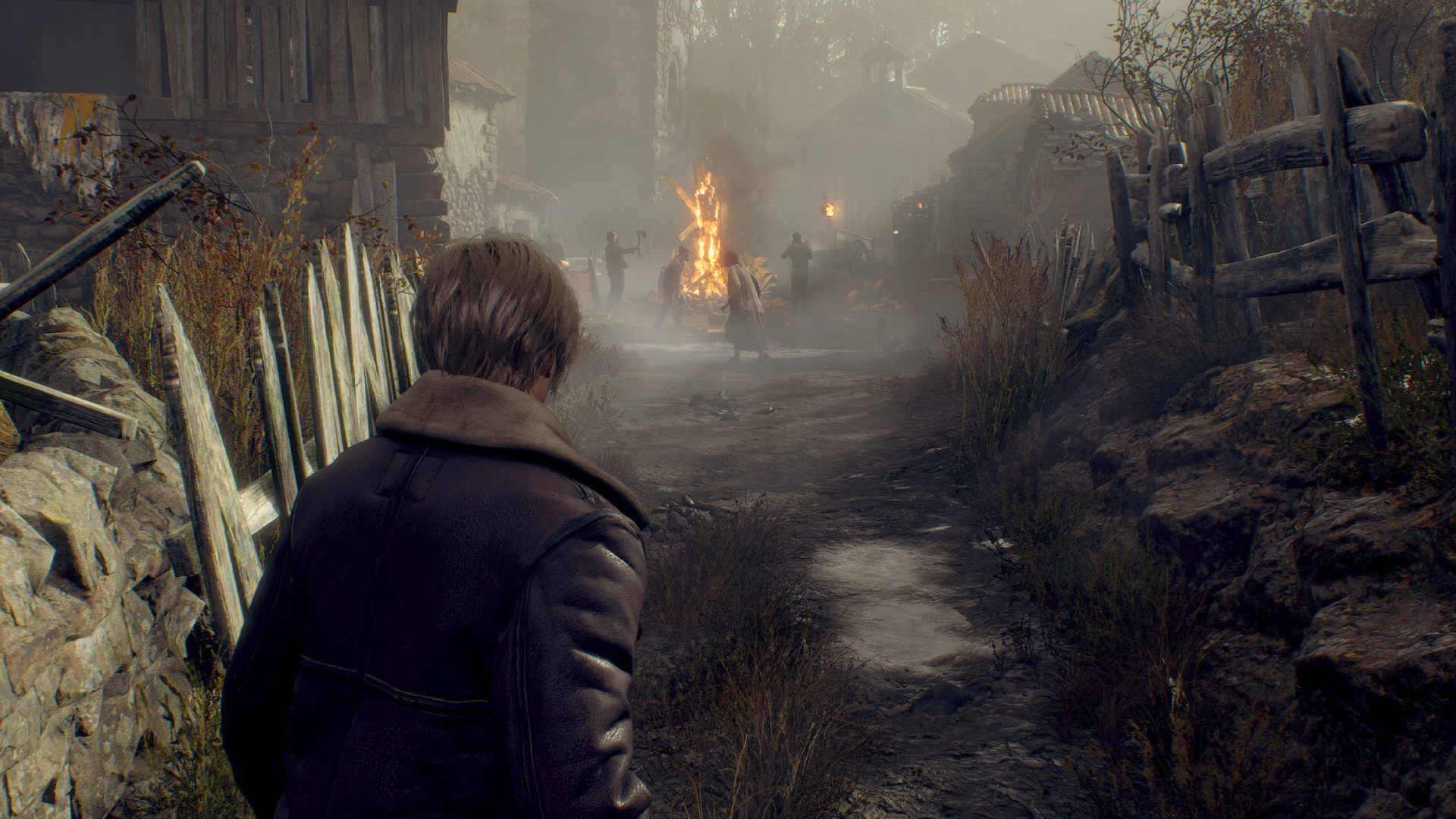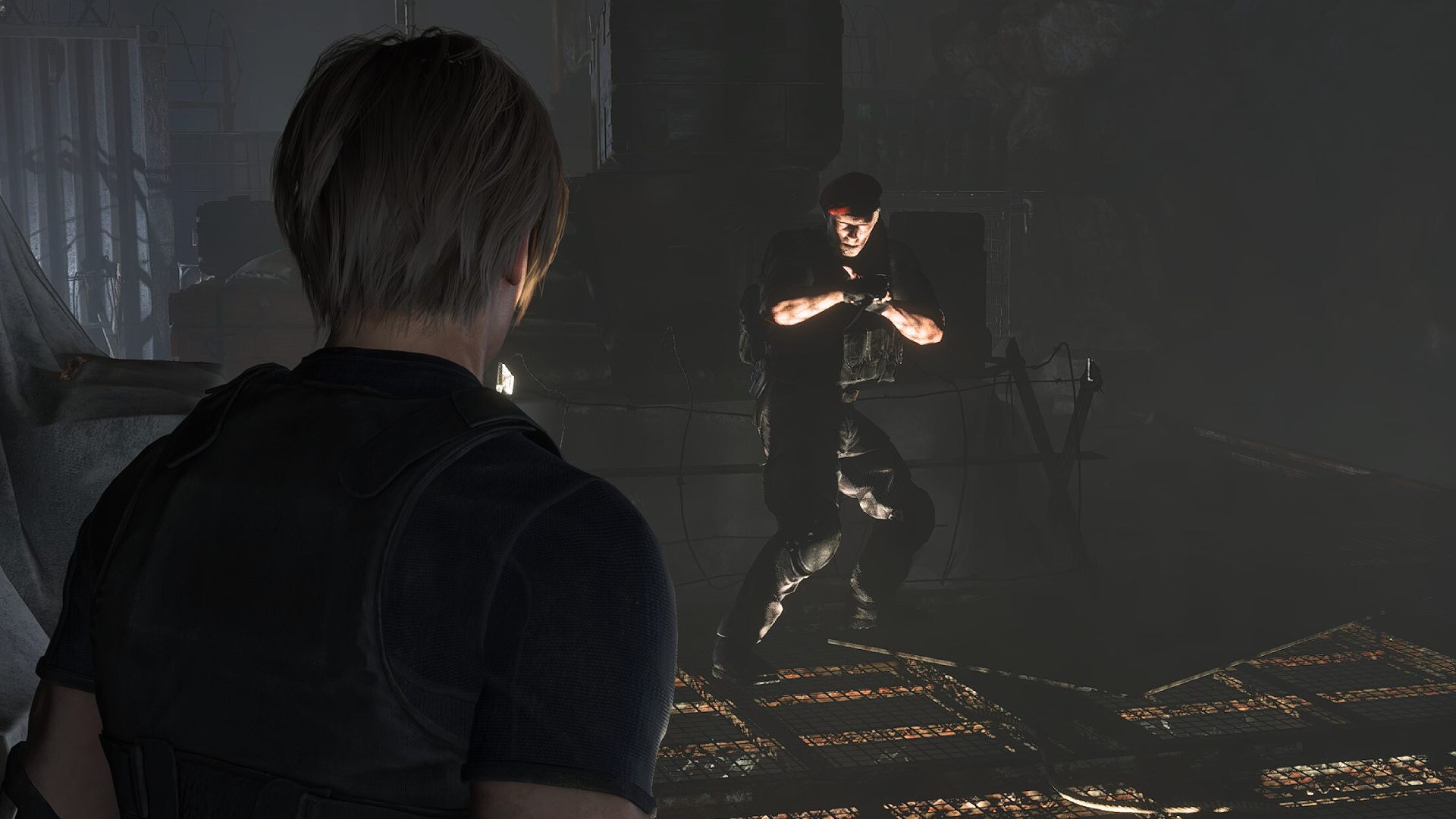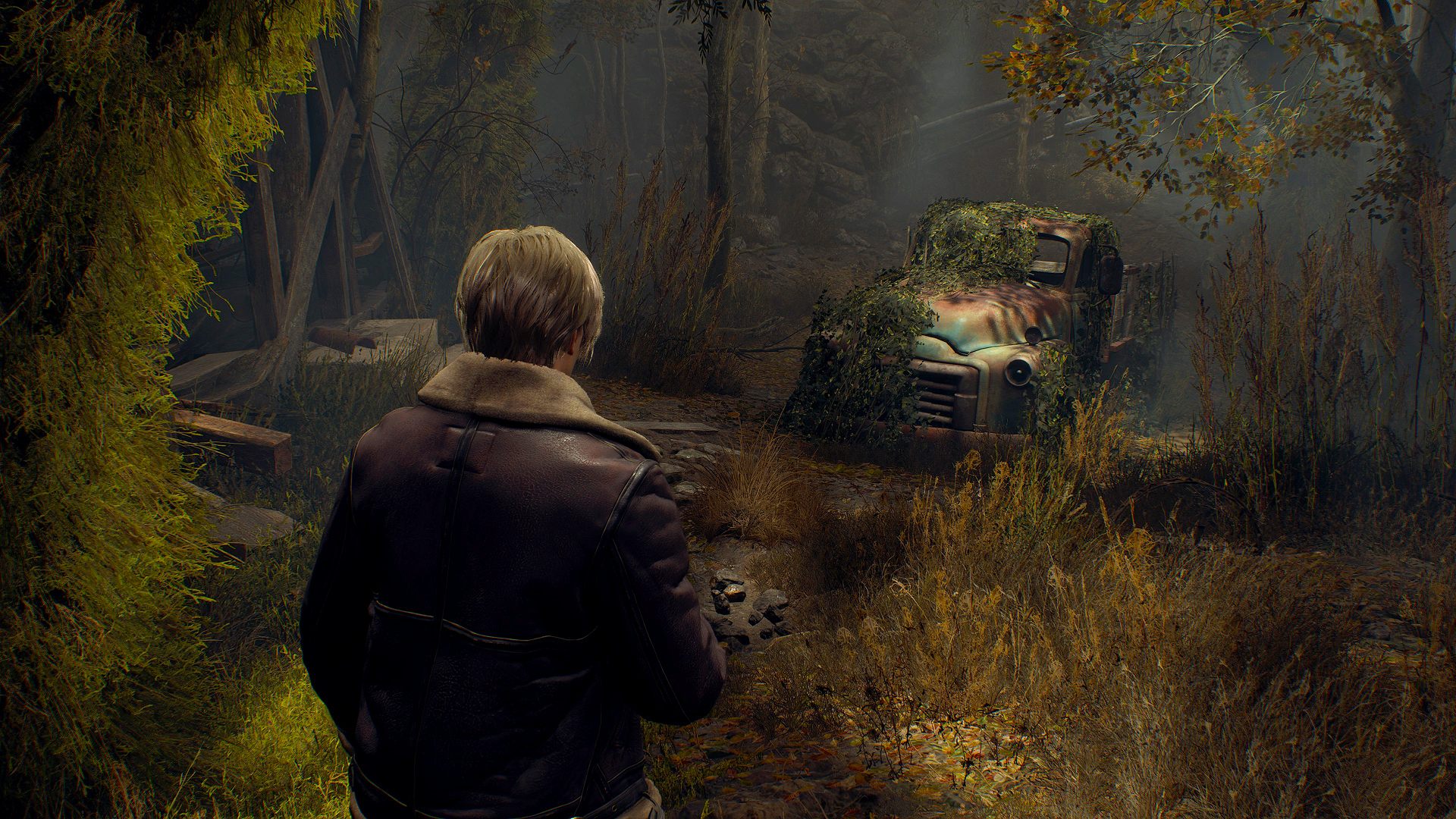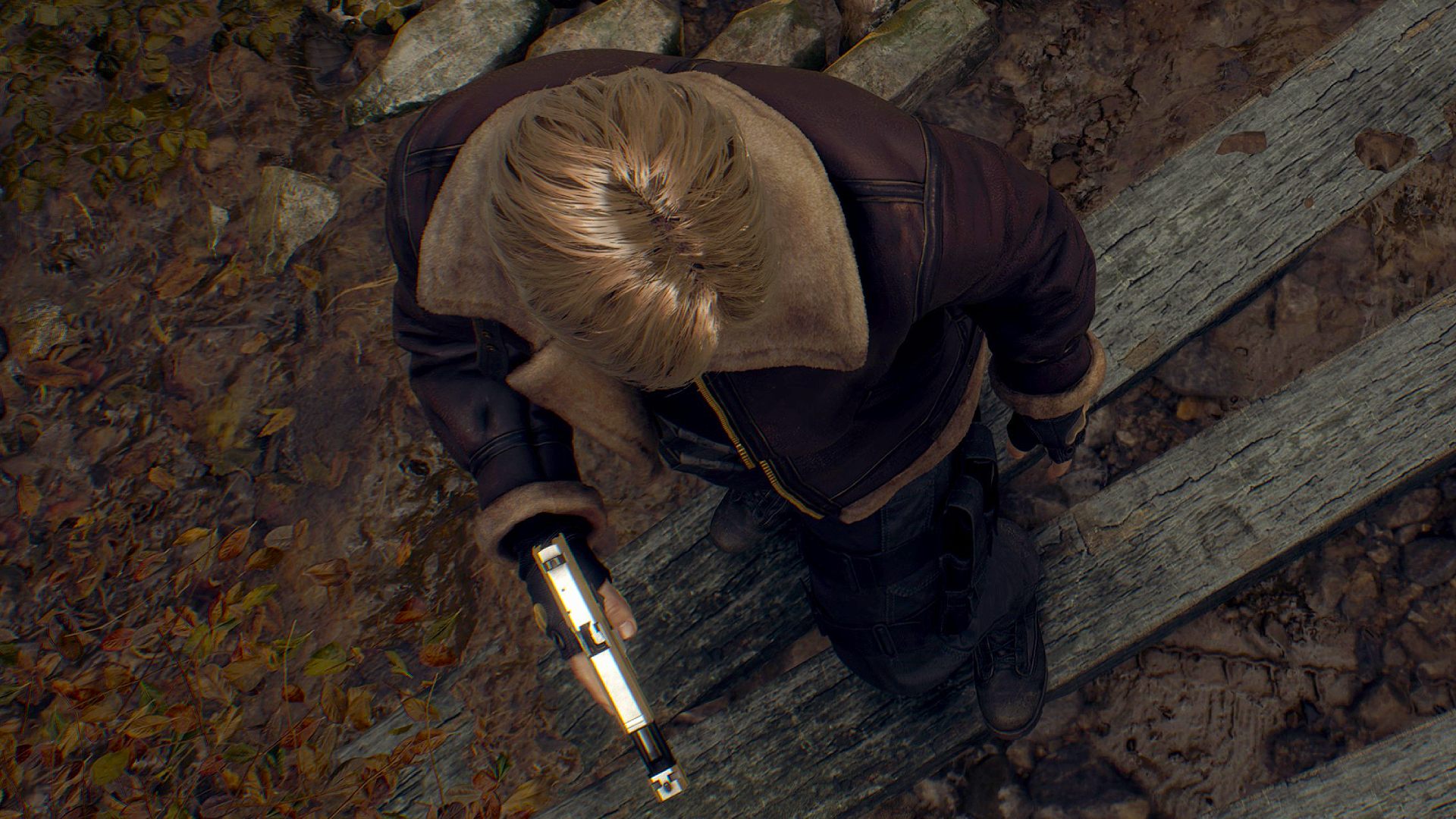The best Resident Evil 4 Remake settings will make a difference in the revamped survival horror classic, whether you’re looking for a higher frame rate or better visuals. To save you from any hardware hassle, we’ve put Capcom’s creepy caper to the benchmark test using its wide selection of effects and performance options.
Before stepping into Leon Kennedy’s sheepskin bomber jacket, we’d suggest checking out Resident Evil 4 Remake system requirements. While our settings recommendations will help you boost fps in what is one of the best horror games in 2023, you’ll need to meet Capcom’s minimum specs to run the wicked romp. We’ve also put Resident Evil 4 Remake Steam Deck compatibility to the test, so make sure to check out our findings before playing on the go.
PCGamesN test rig: MSI MPG Trident AS 11th gaming PC, featuring an Intel Core i7 11700F, MSI Ventus Nvidia GeForce RTX 3070, 32GB of DDR4 3,200MHz RAM, MSI B560 motherboard, and Windows 11.
Best Resident Evil 4 Remake settings
Here are the best Resident Evil 4 Remake settings:
- Cinematics resolution: 4K
- Ray tracing: Off
- FidelityFX Super Resolution 2: Quality
- Texture quality: High
- Texture filtering: High (ANISO x16)
- Mesh quality: High
- Shadow quality: High
- Shadow cache: On
- Contact shadows: Off
- Ambient Occlusion: SSAO
- Volumetric lighting: Mid
- Particle lighting quality: High
- Bloom: On
- Screen space reflections: On
- Subsurface scattering: On
- Hair stands: High
- Graphic dismemberment: On
- Persistent corpses: Many
- Corpse Physics: High
- Diverse enemy animations: On
- Motion blur: Off
- Rain quality: High
- Terrain: On
- Destructible environments: On
- Lens flare: On
- Lens distortion: On
- Depth of field: On
- Resource-intense lighting quality: High
- Resource-intense effects quality: High
Resident Evil 4 Remake presets
Resident Evil 4 Remake presets are incredibly handy, as the list includes an option that’s based on your specific system: By selecting ‘recommended’ from the menu, you’ll be able to automatically dial in a selection that suits your graphics card and available VRAM, meaning you won’t need to worry about choosing the wrong settings for your rig.
Of course, if you’re using a machine armed with one of the best graphics card options around, you’ll end up with a different Resident Evil 4 Remake recommended preset. For our test rig, the automated option advised using a mixture of options that consume around 5.57GB VRAM while running at 4K. As a result, we were able to achieve an average frame rate of around 56fps during benchmark tests – not bad, but probably more of a foundation for additional tweaks.
If you’d rather automatically scale everything back, there’s also a ‘Prioritise performance’ preset that’s designed to do just that. Naturally, the option cuts back on visual quality settings and VRAM usage, which provided a 101fps average in our tests. Again, this is a good place to start if you’re trying to squeeze more frames out of a budget rig, but making additional tweaks will help strike a balance between frame rate and fidelity.
Speaking of which, Resident Evil 4 Remake’s ‘Balanced’ option dials in what Capcom thinks is a good middle-ground array of settings. Weirdly, despite using less VRAM, the preset provided almost the same frame rate as ‘Reccomended’, making it anything but a silver settings bullet. The same goes for the ‘Prioritise graphics’ option, as it produces the same 56fps average as before and guzzles the same amount of GPU memory.
I’m quite a big fan of the Resident Evil 4 Remake ray tracing preset, as it effectively helps squeeze in the lighting technique while preserving performance. Sure, it’ll knock your other settings down a peg or two to accommodate, but if you’re looking to easily switch the feature on without automatically throwing away frames, it’ll absolutely do the trick. We even managed to crank out 62fps using the option, implying that RT isn’t necessarily the most intensive setting on the list.

The ‘Maximum’ Resident Evil 4 Remake setting does exactly what it says on the tin, so you’ll want to take heed of any VRAM warnings on the right-hand side. If you’re rocking a graphic card like the one featured in our Nvidia RTX 4080 review, you should be able to select this option and run things at 4K. Unsurprisingly, our test rig crashes to the desktop with the same settings applied, and we reckon that fact speaks for itself.
Once you’ve chosen a preset as a foundation, we’d recommend making some manual settings changes. Doing so is going to help address any glaring quality issues or frame rate shortcomings that perhaps require finer tuning. There are a few tweaks that’ll make a noticeable difference, but we’ve got you covered in terms of benefits and caveats.
Resident Evil 4 Remake shadow quality
Look, those creepy cult of Los Illuminados buggers are arguably what makes Capcom’s re-do scary, but Resident Evil 4 Remake shadow settings certainly play their part. That extra bit of detail helps set an ambience of sorts, one that makes you feel like a villager could stab you with a pitchfork at any second. Not too fussed about fancy effects? Well, turning shadows down to ‘low’ will potentially provide you with a 14% frame rate uplift, and that could be what you need to achieve that 60fps sweet spot.
Resident Evil 4 Remake ambient occlusion
The Resident Evil 4 Remake provides an extra layer of realism compared to the original, and ambient occlusion assists it in that endeavour. The shadowing technique adds a bit of oomph to objects within a 3D space, but it’ll make your graphics card work that bit harder. We’d leave it on if you can, but turning it off boosted our baseline frame rate to 66fps. The nearly 18% increase may come in handy if you’re scrambling for frames, even if we reckon it’s worth the cost.
Resident Evil 4 Remake texture quality
Great textures can make or break a re-released classic, and Resident Evil 4 Remake is no exception. That said, you can trade away detail in the new version using options that are less hungry for VRAM. We’d still suggest not venturing too far into that particular performance rabbit hole, but even shifting textures from 2 to 1GB results in a 14% fps boost.
Resident Evil 4 Remake terrain
The rural paths of Resident Evil 4 Remake are effectively a forest floor, and turning terrain settings off will save your GPU from generating extra greenery. It’ll make everything look a bit flatter, but you’ll free up a few extra frames by ditching the additional foliage. However, If you’re already hitting a comfortable frame rate, we wouldn’t advise going out of your way to do this, as the extra detail helps distance Capcom’s rework from the original.
Resident Evil 4 Remake FSR 2 settings
Upscaling techniques can’t always save the day, but Resident Evil 4 Remake FSR 2 settings are worth enabling. Switching on FidelityFX Super Resolution ‘quality’ mode helped us increase our baseline frame rate from 56fps to 72fps.
Switching up to Balanced, Performance, and Ultra Performance options will help you reach even higher frame rate heights, up to 106fps to be exact, but it makes some objects a tad too blurry for our tastes. That’s not to say those options look atrocious, but if you’re already achieving over 60fps, there’s arguably no need.
Resident Evil 4 Remake interlaced rendering
The idea of interlaced visuals on a PC in 2023 sounds absurd, as it’s something I’d associate with janky PlayStation 2 graphics. Yet, Resident Evil 4 Remake proudly features the rendering mode within its settings menu, and it doesn’t actually look as bad as you’d expect. Better still, it can improve frame rates by as much as 35%.
If you’re not planning on playing an inch away from your monitor or TV screen, opting for interlaced graphics could help provide performance in a pinch. Up close, you’ll likely be able to see weird jitters and flickering, but it arguably isn’t that noticeable.
Resident Evil 4 Remake hair settings
We reckon Resident Evil 4 Remake hair settings are pretty important, as you’ll spend a lot of the game looking at the back of Leon’s greasy head. Ramping hair strand settings up to high seemingly doesn’t come with any performance caveats, but it will effectively freshen up the federal agent’s follicles with virtual dry shampoo. New year, new Kennedy.
If you’re looking churn out a few extra frames, you might want to consider checking out the Resident Evil 4 Remake DLSS mod. While FSR 2.1 boasts similar abilities, Nvidia’s GeForce upscaler seemingly provides even more of a performance boost.
Can’t decide whether to pick up Capcom’s revamped classic on Steam? Our Resident Evil 4 Remake review says the horror outing sets a new standard, and it ultimately elevates one of the best games ever made.
Download the free PC Game Benchmark fps Monitor to track your frame rates as you play and spot fps drops.







